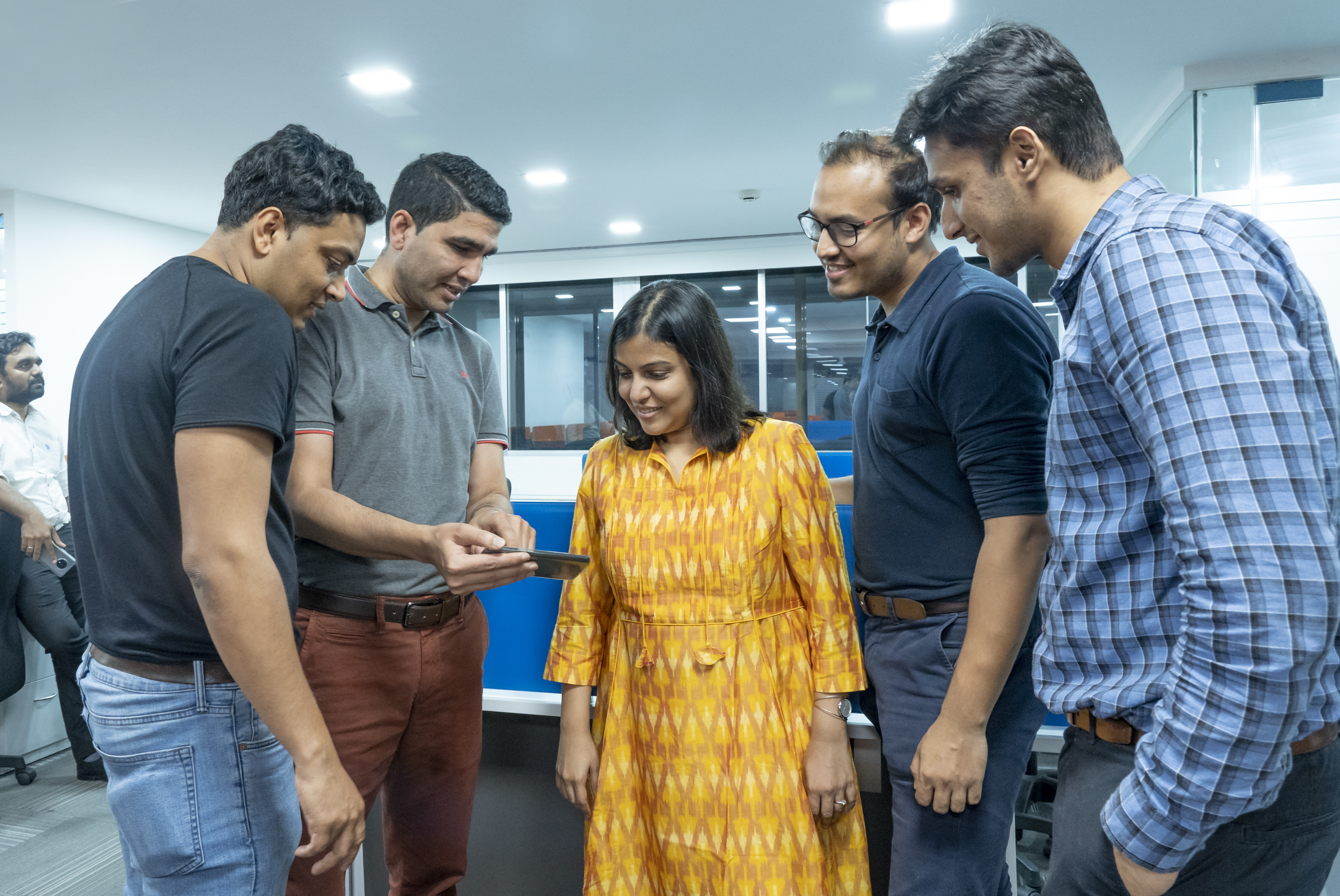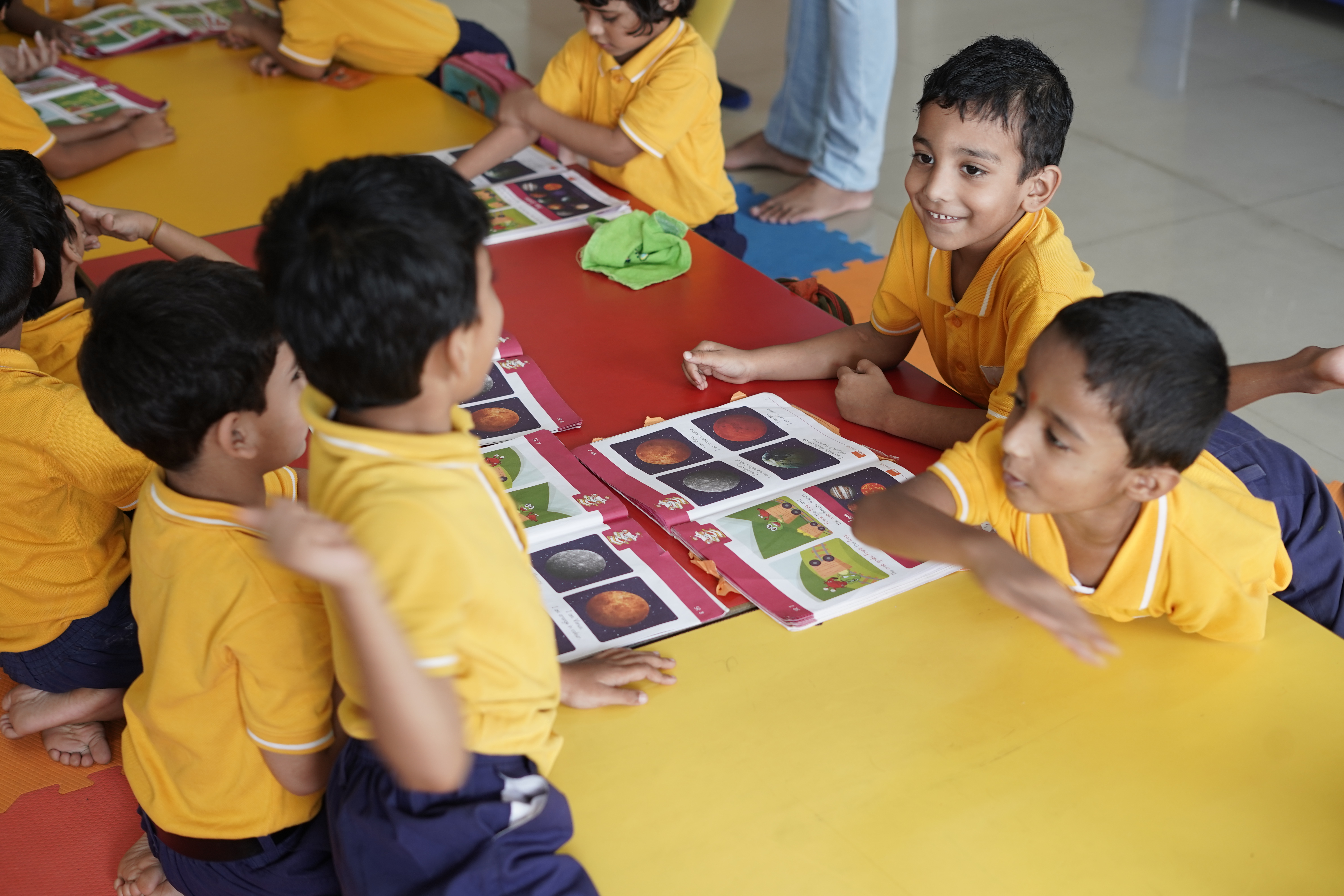Creating a level-playing field for students in small-town

Give Your School The Lead Advantage
Entrepreneurship is often about obsessing over a problem, imagining a world with the problem solved, and then navigating the long, uncertain, and often zigzag journey towards making that imagination a reality. In this first of a series of articles, I hope to take you through the early years of building LEAD School. You will notice that the mission to empower India through excellent schools for every child took root several decades back in small-town Punjab.
Growing up in Pathankot, a small town in Punjab, I used to be both proud and fascinated of my father whenever we stepped out of home together. Wherever we went, whether to the market or to a bank, someone would come up, touch his feet, and say, “Prof. Saheb, I was your student in Government College Gurdaspur and you had such a big influence on me.” They would narrate specific incidents of my father taking them aside to provide counsel, dramatising a scene from Shakespeare in class, or reciting poetry with a zest that brought Shelley and Keats alive! The respect that he commanded and his influence on others’ lives made me realise the importance of a teacher.
At that impressionable age, the respect he commanded and his influence on his students made me realise that the role teachers play in a child’s life is unparalleled.
I also noticed the difference that a passionate teacher makes. My father was a teacher by choice. He put tremendous effort into this teaching because it was his calling. He never went to class unprepared; never felt that teaching was just something that he had to do to earn a living. He gave me a sense of what a great teacher can be – someone who ignites interest in students, sets free their imagination, and provides them wings to soar – as opposed to settling children down into rote learning.
Early Years and Education
In Pathankot, I went to the ‘best school’. It was a convent school. Our teachers were dedicated and well intentioned. Most of them cared for us and taught to the best of their ability. But in hindsight, they were clearly hampered by being in the backwaters of the country. In our school in that small town, there was hardly any awareness of the latest pedagogy led by research of how the brain works, how human beings develop, and how learning happens. We were just one more batch on an assembly line of unexamined, old practices of teaching that rested on lecture-based teaching and rote learning.
I was lucky to have my father, the teacher, to step in to fill the gaps. He made sure that our dinner table conversations were never routine. They were never planned, but somehow we always came back with more knowledge or information. My father made sure that he made the learning practical and easy to digest for us with real-life examples.
We were three siblings and our father would regularly challenge our learning. At the dinner table, this translated into slicing up an apple into eight chunks to learn about fractions. In our spare time, we would play simple games such as locate so-and-so city in the atlas. During summers, he would take us up to the terrace in the evening where we would write impromptu essays. He also instilled a love of reading in all of us. In fact, our house was the only one in the area to boast of a library. The presence of books meant I began reading Shakespeare in Grade 6.
Our home environment gave us the propulsive force that was needed to escape the orbit of local constraints. At that time, I didn’t realise how rare it was for children in small-town India and how fortunate I was to receive it. At that time, I felt on top of the world because I was always doing well in curriculars and extra-curriculars.
Cycles of Inadequacies
I was first hit with a strong sense of inadequacy when I went to Punjab Engineering College in Chandigarh. That was the first time that reality hit me hard. In my town, I was a celebrated student, but here, I was overawed by students from Chandigarh and Delhi. They dressed differently, spoke fluently, and were aware of so many more things. I had to work hard to be accepted but a feeling took root that children from small towns begin with a disadvantage.
The same story repeated when I went to IIM-Ahmedabad. Students from other metros and better colleges had gone to preparatory institutes and were well prepared for the B-school environment. I felt like a deer in the headlights! Their prior knowledge and exposure intimidated me since they seemed to be light years ahead.
Over the course of those two years, through conversations with friends and reflections through the different courses, my thought process transitioned from the “‘world is not fair to small-town kids” and “‘I am not good enough” to “what can I do about it?”
I continued to mull over these issues but, meanwhile, life happened and it was time to eke out a living. This led me to join P&G. It was a great role, and I led P&G’s beauty care business in the Asia Pacific for eight years, based out of Singapore.
But, the yearning to do something in education persisted. I wanted to make a difference and I realised that my job wasn’t helping me go where I wanted to be. That was also the time that the Programme for International Student Assessment (PISA) results were declared. Singapore won top honours while India was placed in the bottom three. The results physically pained me; the two countries were five hours away by flight and 20 years apart when it came to education.
I wondered how we could help enable the human potential of the country to move forward, and take the country ahead. I turned to my father, who had just one thing to say: “Itna pain hai toh kuch karte kyu nahi? (why don’t you do something if it bothers you so much?)”
It was time to move back to India.
The Return and Rethink During my exploration on the best way to make a difference in education in India, I met Subhash Chandra. Soon after, I joined as CEO at Zee Learn. We took it from a pre-school franchise company to a vertically integrated education company with pre-schools, K-10 schools, school solutions, and vocational education. I was able to lead the development of iLLUME and Litera Octave – new-to-the-world pedagogies that set the bar of innovation in preschools and schools. It was a heady experience and my first brush with education in India in the role of an operator and influencer.
While the business at Zee Learn was growing fast, I was beset with a nagging feeling that I wasn’t doing enough, that I wasn’t solving the real problem for which I had made a life switch. The problem in India was in small towns and for middle to lower income families. Government and affordable schools were providing poor learning outcomes and good learning was still out of the reach of millions of students. Desperate times need desperate measures, and I soon quit my job to start a school in a village in Gujarat with Smita Deorah – my partner in life and at work.
There were already friends who had questioned the wisdom of leaving a comfortable lifestyle in Singapore to return to India but this move had everyone wondering if we had lost it. From being the CEO of a listed education company to going and opening a school in a village – that didn’t make sense to many of our well-wishers. We understood their concern but we were mad in our desire to do something about the problem we cared about. In 2012, we co-founded LEAD School.
We knew that millions of students in small-town India were being deprived of the benefit of affordable, good-quality English medium education and denied the opportunity to realise their full potential. We observed that low teacher skills and traditional teacher training methods were obstacles that stood in the way to improving learning outcomes.
Our research showed that all existing solutions were for high-fee schools catering to upper-middle class families. These solutions and curriculums then mindlessly percolated down to low-fee schools; there was no context as solutions were not designed specifically for lower middle-class families.
This was where we knew change needed to happen. While the learning outcomes that we wanted to achieve for our students needed to be at the same high level as expensive schools, the path to achieving them had to be contextualised for the unique needs of our students. So we dug deep into curriculum and pedagogy. We researched world over for best practices in similar situations. And we iterated with our students and teachers to see what worked and what didn’t.
Our past experiences came to the fore here. The system thinking from IIM-A—looking at the problem as a whole and understanding the interconnections of different moving parts was critical. Consumer-centricity, which we learnt at P&G, ensured that whatever we were building, was deeply rooted in empathy and understanding of our users.
Soon, we saw shifts in learning outcomes. Percentage mastery in science, math, and social science improved and so did English literacy skills. Teacher performance and parent delight improved as well, and admissions started growing. We knew that the wheels of change had started turning. This led us to start four more schools in Maharashtra to check if the magic of Gujarat can be replicated there. Results that year showed that student learning outcomes in all five schools continued to be high. It was clear that we were making an impact, but I didn’t think it was enough.
Our country has 1.5 million schools, and we could have added to the numbers. But, Smita and I could, at the most, open up to 50 schools in our lifetime. We didn’t feel that this was a large enough impact and yearned to make a bigger dent.

This led us to partnering with Affordable Private Schools (APSes) in order to help them transform how children engaged in a classroom using the LEAD integrated learning system.
We implemented our learning system in affordable schools in Tier II-IV towns to lead the change. Over the last three years, it has been gratifying to watch LEAD grow into an education company that is bringing innovation to 6,00,000+ students, 12,000+ teachers, and 1700+ schools.
The numbers stack up great, but I must admit we never set out to build a business. The goal was, is, and will always be one: to ensure high student learning outcomes for students who otherwise are disadvantaged because of geography or income.
With LEAD, we are doing our bit to ensure our children are always kept at the centre of the solution.
With India at the cusp of an educational revolution, our work is far from complete. But what helps to energise me whenever the going gets tough is calling to mind what we are trying to do with LEAD: empower every small-town student of India with excellent and affordable education. It has been a great privilege to be able to do that for a living.
LEAD is transforming education in India by helping children become ready for the exam of life. To enrol your child in a LEAD powered school: Fill the admission form now


-page-002.jpg)
.png)
